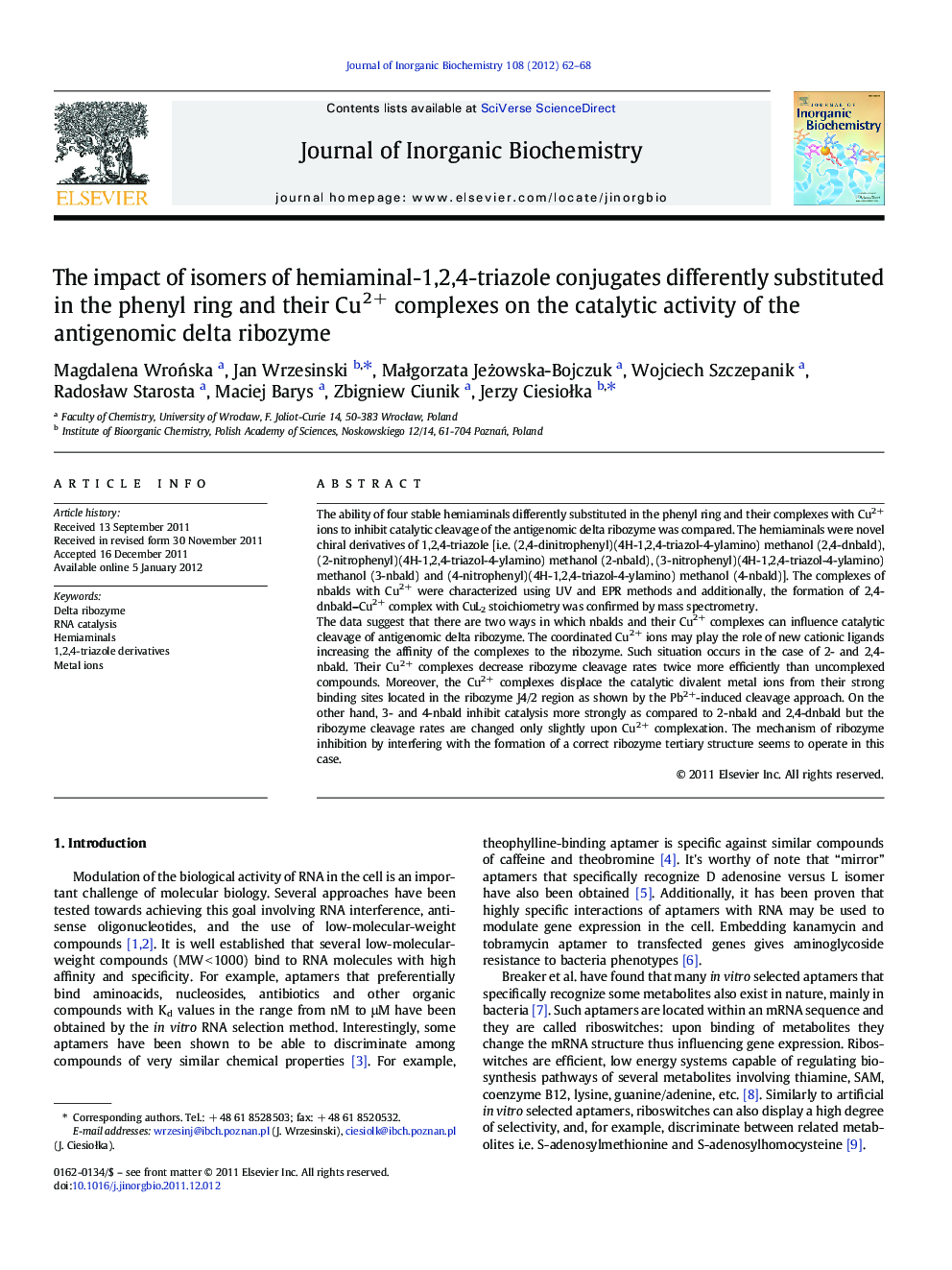| Article ID | Journal | Published Year | Pages | File Type |
|---|---|---|---|---|
| 1317797 | Journal of Inorganic Biochemistry | 2012 | 7 Pages |
The ability of four stable hemiaminals differently substituted in the phenyl ring and their complexes with Cu2+ ions to inhibit catalytic cleavage of the antigenomic delta ribozyme was compared. The hemiaminals were novel chiral derivatives of 1,2,4-triazole [i.e. (2,4-dinitrophenyl)(4H-1,2,4-triazol-4-ylamino) methanol (2,4-dnbald), (2-nitrophenyl)(4H-1,2,4-triazol-4-ylamino) methanol (2-nbald), (3-nitrophenyl)(4H-1,2,4-triazol-4-ylamino) methanol (3-nbald) and (4-nitrophenyl)(4H-1,2,4-triazol-4-ylamino) methanol (4-nbald)]. The complexes of nbalds with Cu2+ were characterized using UV and EPR methods and additionally, the formation of 2,4-dnbald–Cu2+ complex with CuL2 stoichiometry was confirmed by mass spectrometry.The data suggest that there are two ways in which nbalds and their Cu2+ complexes can influence catalytic cleavage of antigenomic delta ribozyme. The coordinated Cu2+ ions may play the role of new cationic ligands increasing the affinity of the complexes to the ribozyme. Such situation occurs in the case of 2- and 2,4-nbald. Their Cu2+ complexes decrease ribozyme cleavage rates twice more efficiently than uncomplexed compounds. Moreover, the Cu2+ complexes displace the catalytic divalent metal ions from their strong binding sites located in the ribozyme J4/2 region as shown by the Pb2+-induced cleavage approach. On the other hand, 3- and 4-nbald inhibit catalysis more strongly as compared to 2-nbald and 2,4-dnbald but the ribozyme cleavage rates are changed only slightly upon Cu2+ complexation. The mechanism of ribozyme inhibition by interfering with the formation of a correct ribozyme tertiary structure seems to operate in this case.
Graphical AbstractThe impact of hemiaminal 1,2,4 triazole conjugates on the catalytic activity of antigenomic delta ribozyme depends on several factors: (i) the molecular structure of a particular hemiaminal derivative, (ii) its ability to coordinate Cu2+ (iii) and likely, on the possibility of its protonation under conditions of interacting with the ribozyme.Figure optionsDownload full-size imageDownload as PowerPoint slideHighlights► Hemiaminal - 1,2,4-triazole conjugate forms complex with Cu2+ with CuL2 stochiometry. ► 1,2,4-triazole conjugates and complexes inhibit catalytic activity of delta ribozyme. ► Upon binding to ribozyme, the catalytic Mg2+ is removed or conformation is changed.
